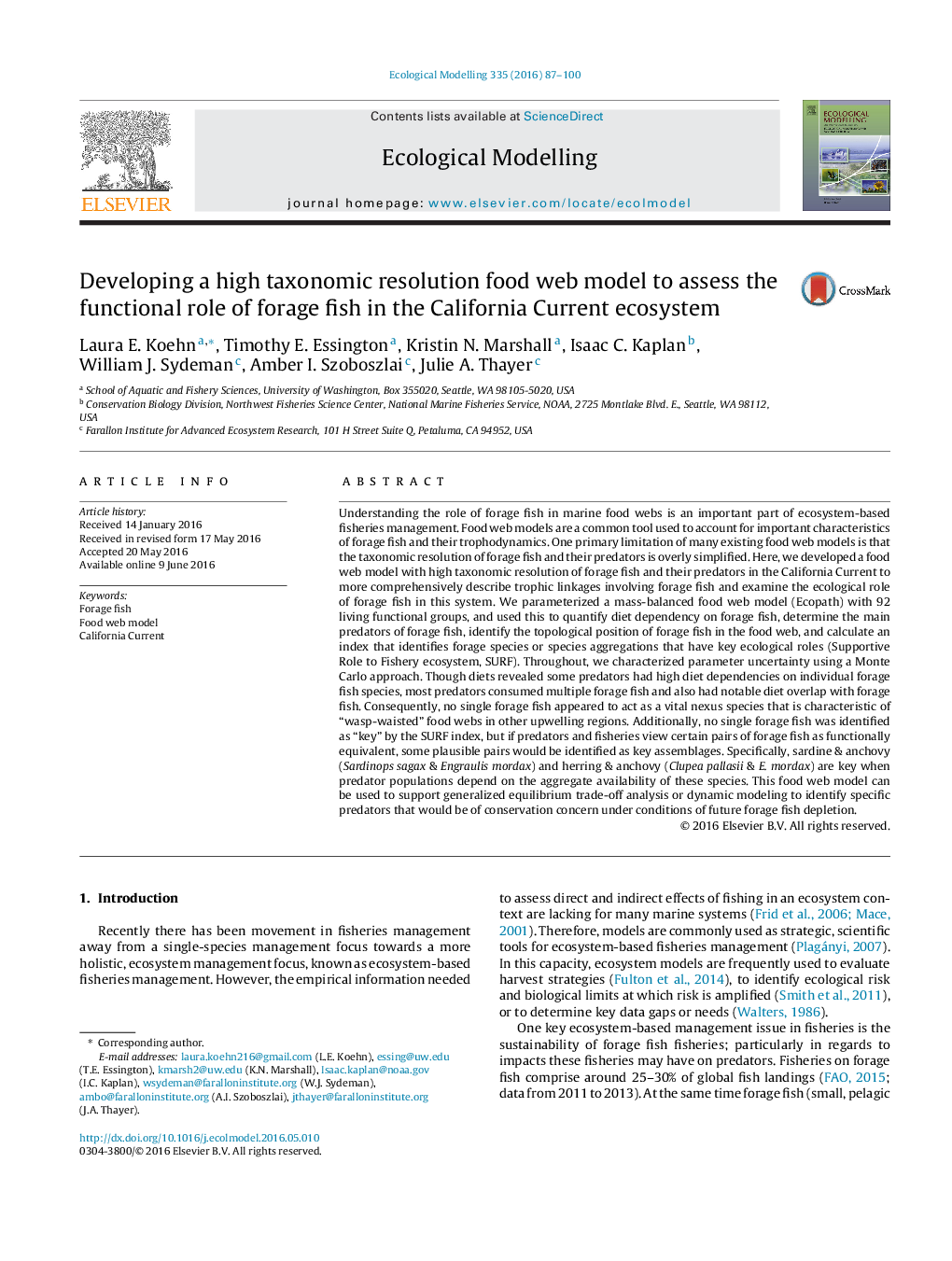| کد مقاله | کد نشریه | سال انتشار | مقاله انگلیسی | نسخه تمام متن |
|---|---|---|---|---|
| 4375543 | 1617412 | 2016 | 14 صفحه PDF | دانلود رایگان |
• High taxonomic resolution food web model shows topological position of forage fish.
• California Current predators consume multiple forage fish and forage fish prey.
• Most predators are not reliant on individual forage fish, except many seabirds.
• No single forage fish is ecologically “key” in terms of food web metrics calculated.
Understanding the role of forage fish in marine food webs is an important part of ecosystem-based fisheries management. Food web models are a common tool used to account for important characteristics of forage fish and their trophodynamics. One primary limitation of many existing food web models is that the taxonomic resolution of forage fish and their predators is overly simplified. Here, we developed a food web model with high taxonomic resolution of forage fish and their predators in the California Current to more comprehensively describe trophic linkages involving forage fish and examine the ecological role of forage fish in this system. We parameterized a mass-balanced food web model (Ecopath) with 92 living functional groups, and used this to quantify diet dependency on forage fish, determine the main predators of forage fish, identify the topological position of forage fish in the food web, and calculate an index that identifies forage species or species aggregations that have key ecological roles (Supportive Role to Fishery ecosystem, SURF). Throughout, we characterized parameter uncertainty using a Monte Carlo approach. Though diets revealed some predators had high diet dependencies on individual forage fish species, most predators consumed multiple forage fish and also had notable diet overlap with forage fish. Consequently, no single forage fish appeared to act as a vital nexus species that is characteristic of “wasp-waisted” food webs in other upwelling regions. Additionally, no single forage fish was identified as “key” by the SURF index, but if predators and fisheries view certain pairs of forage fish as functionally equivalent, some plausible pairs would be identified as key assemblages. Specifically, sardine & anchovy (Sardinops sagax & Engraulis mordax) and herring & anchovy (Clupea pallasii & E. mordax) are key when predator populations depend on the aggregate availability of these species. This food web model can be used to support generalized equilibrium trade-off analysis or dynamic modeling to identify specific predators that would be of conservation concern under conditions of future forage fish depletion.
Journal: Ecological Modelling - Volume 335, 10 September 2016, Pages 87–100
